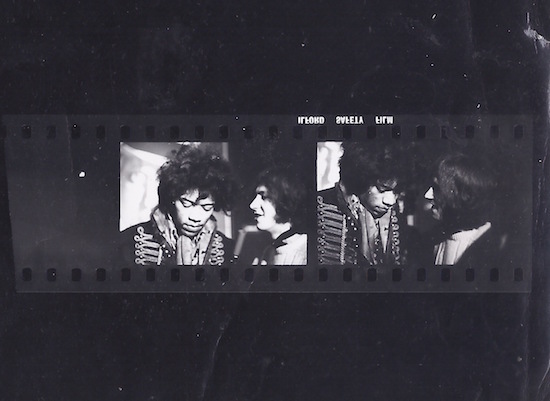In terms of pop music history and all of its tales of incendiary scenes, from the dusty crossroads of the ’20s Mississippi delta to the sun and whiskey-soaked hedonism that flowed down the ’80s Sunset Strip, few have been understated. But when it comes to the mid-to-late 60s Swinging London, no hype needs sparing. Arguably, no other scene has been quite as resonant in its influence – in its global scale and lasting power anyway – and few were ever quite so closely knit, so fascinatingly incestuous. The models, the musicians and other creative minds of the age all seemed to crowd in together, tripping over each other’s Cuban heels and mimicking each other’s hairstyles of increasing expanse, in the process making London the undisputed centre of the popular culture universe for a few short years. But one thing that doesn’t set this era apart from the countless other times and places that eeked out musical or stylistic milestones of significance, is how those who were actually involved and participated in the melee felt the days to be heady, but not necessarily unnatural.
It’s probably why 60s scenester Rowan Bulmer talks about his time in the trenches without a hint of grandeur and it’s probably why his intimate photographs of the era didn’t see the light of day for decades. That is, not until his daughter Tahita – lead singer for indie-electro outfit NYPC, formerly New Young Pony Club – cracked open a box of his contact sheets in 2012 and took him to task over sharing his work with the world. "No one wants to see these old things," he said, as if they were his dusty old school yearbooks. Tahita, enraged at the idea of all the less-accomplished snappers enjoying years of press, started shopping around her father’s remarkable story on his behalf.
That story starts on the set of a photoshoot, where young Rowan’s model girlfriend of three years was posing for a professional photographer. Rowan, an art school grad spending his days, as he puts it, "knocking about, wondering what to do with my life, not caring", spotted an opportunity and thought, "Well, that sounds like an easy life!" He subsequently received his basic training working at Sinclair’s, the company famed for its cine-camera the Newman-Sinclair used by the explorer Captain Scott (before his famous, fatal stroll round the block). "But after I’d been there at Sinclair’s about two and a half years I thought, I feel I’m right to be let loose on the world," he says.
But where to? Well, like many other youths of the post-war generation with oodles of disposable income, young Rowan was a London clubber. He frequented Eel Pie Island, the Ealing Club, the 100 Club and the like, catching the eye of the pretty girls and often unknowingly hobnobbing with future global superstars. So, with an interest in photography and a packed schedule of schmoozing around London’s young creative elite, becoming a music and fashion photographer was as natural a progression as any. With his arsenal of social contacts that would turn a Hilton green, Rowan secured dozens of freelance jobs. He shot album artwork for record labels, cased the biggest music festivals, did official snapping for Ready Steady Go! – a gig he bagged by appearing as a dancer on the show – and a premium studio rental right under the Marquee Club.
Of course, this means that Rowan is brimming with stories about basically any and every star that came out of the era. He swapped childhood chatter with Michael Caine and did the first press shots for Barbara Hulanicki’s Biba store. He was even sipping drinks with Brian Epstein in the days before he died. And if those anecdotes seemed implausible, a quick flick through his photos proves beyond a doubt that this man was in the serious thick of it.
The most astounding thing, however, is that his current collection is only a small titbit of the coffee-table-tome ammunition that once was. An unknown number of boxes containing negatives and contact sheets were lost during the 1988 selling of the Marquee, where Rowan had left his work to languish in obscurity. His attitude clearly hasn’t seen much change in the intervening years – he still doesn’t seem too fussed about the prints or his own photographic legacy at large. But, thanks to the gentle proddings of his daughter, what is left of his work is now on offer to view, tastes of which are accompanied here by a few of the man’s choice anecdotes – from bunking with Clapton to playing matchmaker for one of Swinging London’s power couples.
Click on the image below to begin scrolling through the gallery


